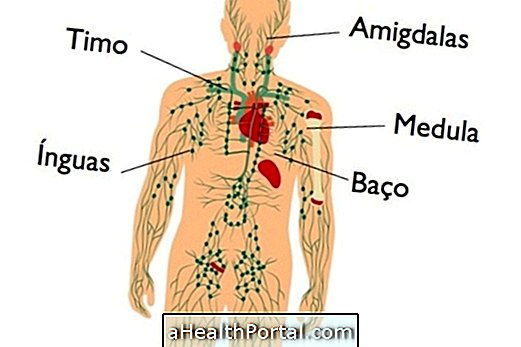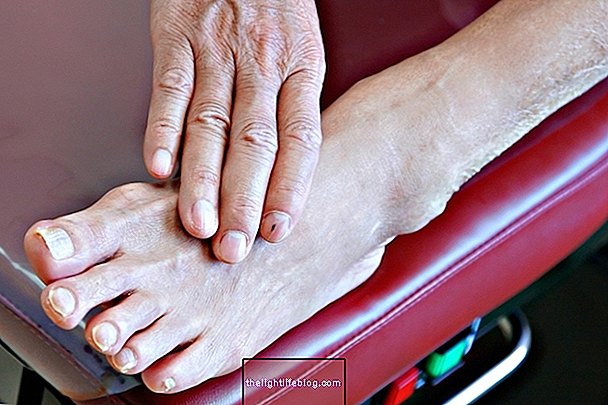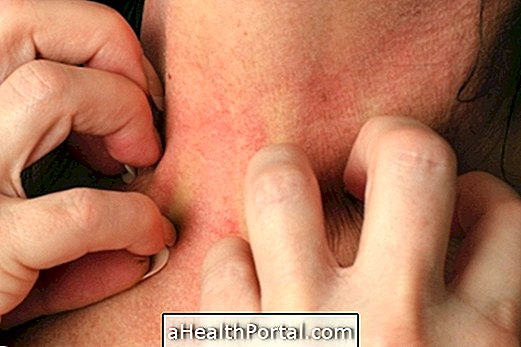Sclerosis is a term used to indicate the stiffening of tissues, whether due to neurological, genetic or immunological issues, which can lead to compromising the body and reducing the person's quality of life.
Depending on the cause, sclerosis can be classified as tuberous, systemic, amyotrophic or multiple lateral, each presenting different characteristics, symptoms and prognoses.

Types of sclerosis
1. Tuberous Sclerosis
Tuberous sclerosis is a genetic disease characterized by the appearance of benign tumors in various parts of the body such as the brain, kidneys, skin and heart, for example, causing symptoms related to the site of tumor onset, such as spots on the skin, lesions in the face, arrhythmia, palpitations, epilepsy, hyperactivity, schizophrenia and persistent cough.
Symptoms may occur even in childhood and the diagnosis can be made through genetic and imaging exams such as cranial tomography and magnetic resonance depending on the site of tumor development.
This type of sclerosis has no cure, and the treatment is aimed at relieving symptoms and improving the quality of life through the use of anti-convulsant medications, physical therapy and psychotherapy sessions. It is also important that the person has periodic monitoring of a doctor, such as cardiologist, neurologist or general practitioner, for example, depending on the case. Understand what tuberous sclerosis is and how to treat it.
2. Systemic Sclerosis
Systemic sclerosis, also known as scleroderma, is an autoimmune disease characterized by hardening of the skin, joints, blood vessels and some organs. This disease is most common in women between the ages of 30 and 50 and the most characteristic symptoms are numbness in the fingers and toes, difficulty breathing, and severe pain in the joints.
In addition, the skin becomes stiff and dark, making it difficult to change facial expressions, as well as evidence the veins of the body. It is also common for people with scleroderma to have bluish fingertips, characterizing Raynaud's phenomenon. See what are the symptoms of the Raynaud phenomenon.
The treatment of scleroderma is done with the aim of reducing symptoms, and it is usually recommended by the doctor the use of non-steroidal anti-inflammatory drugs. Learn more about systemic sclerosis.

3. Amyotrophic Lateral Sclerosis
Amyotrophic Lateral Sclerosis or ALS is a neurodegenerative disease in which there is destruction of the neurons responsible for the movement of voluntary muscles, leading to progressive paralysis of the arms, legs or face, for example.
The symptoms of ALS are progressive, to be, as the neurons are degraded, there is a decrease in muscle strength, as well as difficulty walking, chewing, talking, swallowing or maintaining posture. Because this disease affects only the motor neurons, the person still has their senses preserved, that is, is able to hear, feel, see, smell and identify the taste of food.
The ALS has no cure, and the indicated treatment is aimed at improving the quality of life. The treatment is usually done through sessions of physiotherapy and use of medications according to the guidance of the neurologist, such as Riluzole, which slows the evolution of the disease. See how the treatment is done for ALS.
4. Multiple Sclerosis
Multiple sclerosis is a neurological disease of unknown cause, characterized by the loss of the myelin sheath of the neurons, leading to the appearance of sudden or progressive symptoms, such as weakness of the legs and arms, urinary or fecal incontinence, extreme tiredness, loss of memory and difficulty concentrating. Learn more about multiple sclerosis.
Multiple sclerosis can be classified into three types according to the manifestation of the disease:
- Multiple Sclerosis Outbreak-Remission : It is more common form of the disease, being more frequent in people under 40 years of age. This type of multiple sclerosis occurs in outbreaks, in which the symptoms appear suddenly and then disappear. Outbreaks occur at intervals of months or years and last for less than 24 hours;
- Secondarily progressive multiple sclerosis : It is a consequence of multiple sclerosis outbreak-remission, in which there is the accumulation of the symptoms occurred over time, being difficult the recovery of the movements and leading to the progressive increase of the incapacities;
- Primary progressive multiple sclerosis : In this type of multiple sclerosis, the symptoms progress slowly and progressively without any outbreaks. Properly progressive multiple sclerosis is more common in people over 40 and is considered to be the most severe form of the disease.
Multiple sclerosis has no cure, and treatment should be carried out for life, and it is important that the person accepts the disease and adapts to their lifestyle. The treatment is usually done with the use of medications that depend on the symptoms that the person presents, in addition to performing physiotherapy and occupational therapy. See how treatment for multiple sclerosis is done.
Also watch the following video and know what exercises to do to feel better:





















